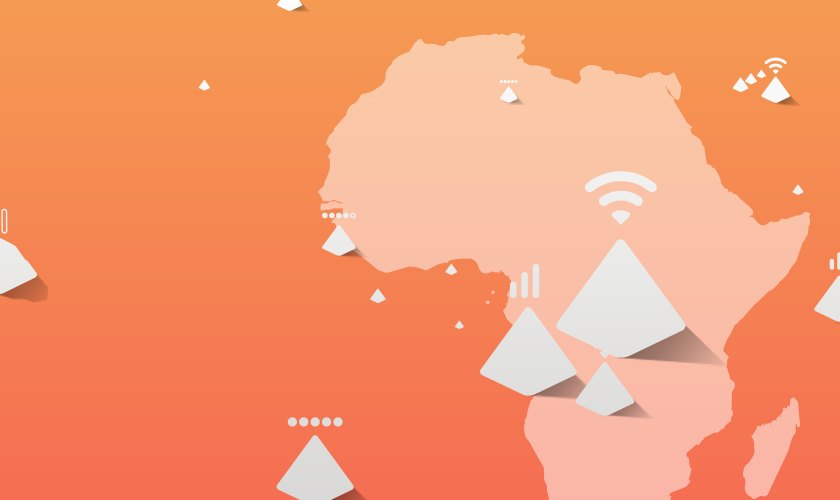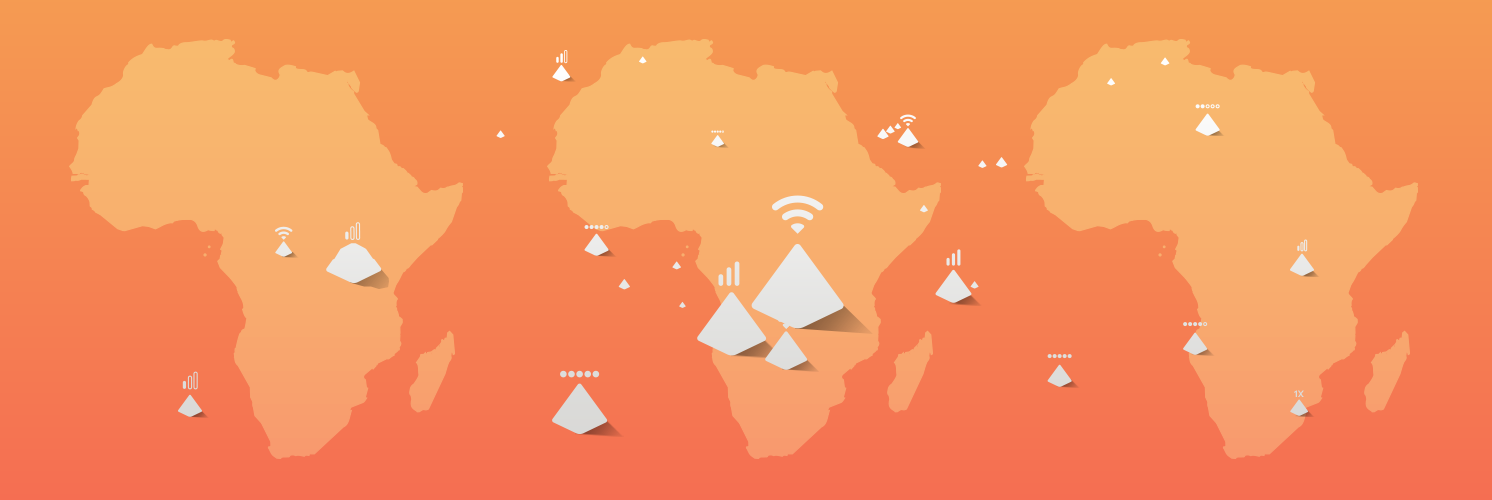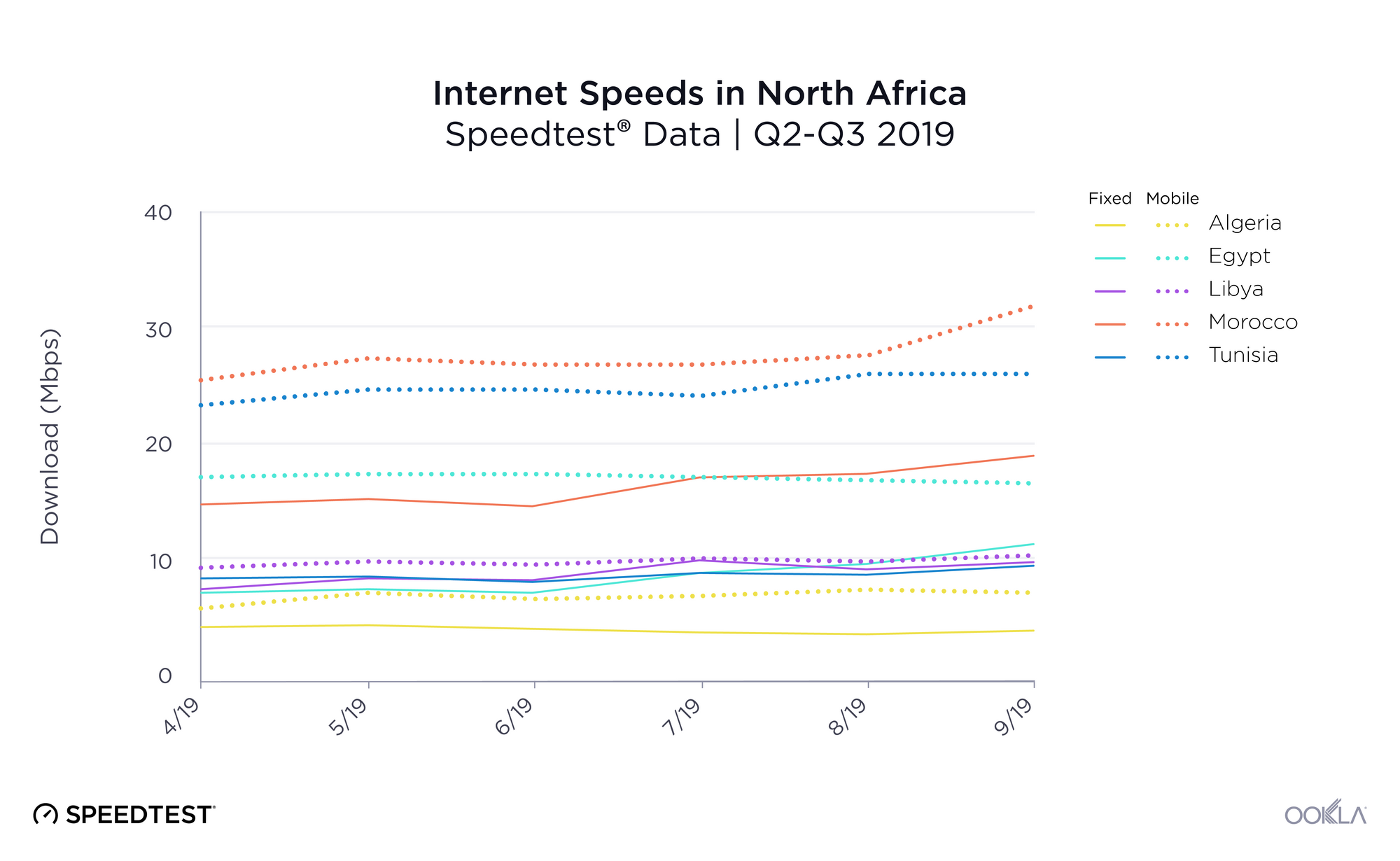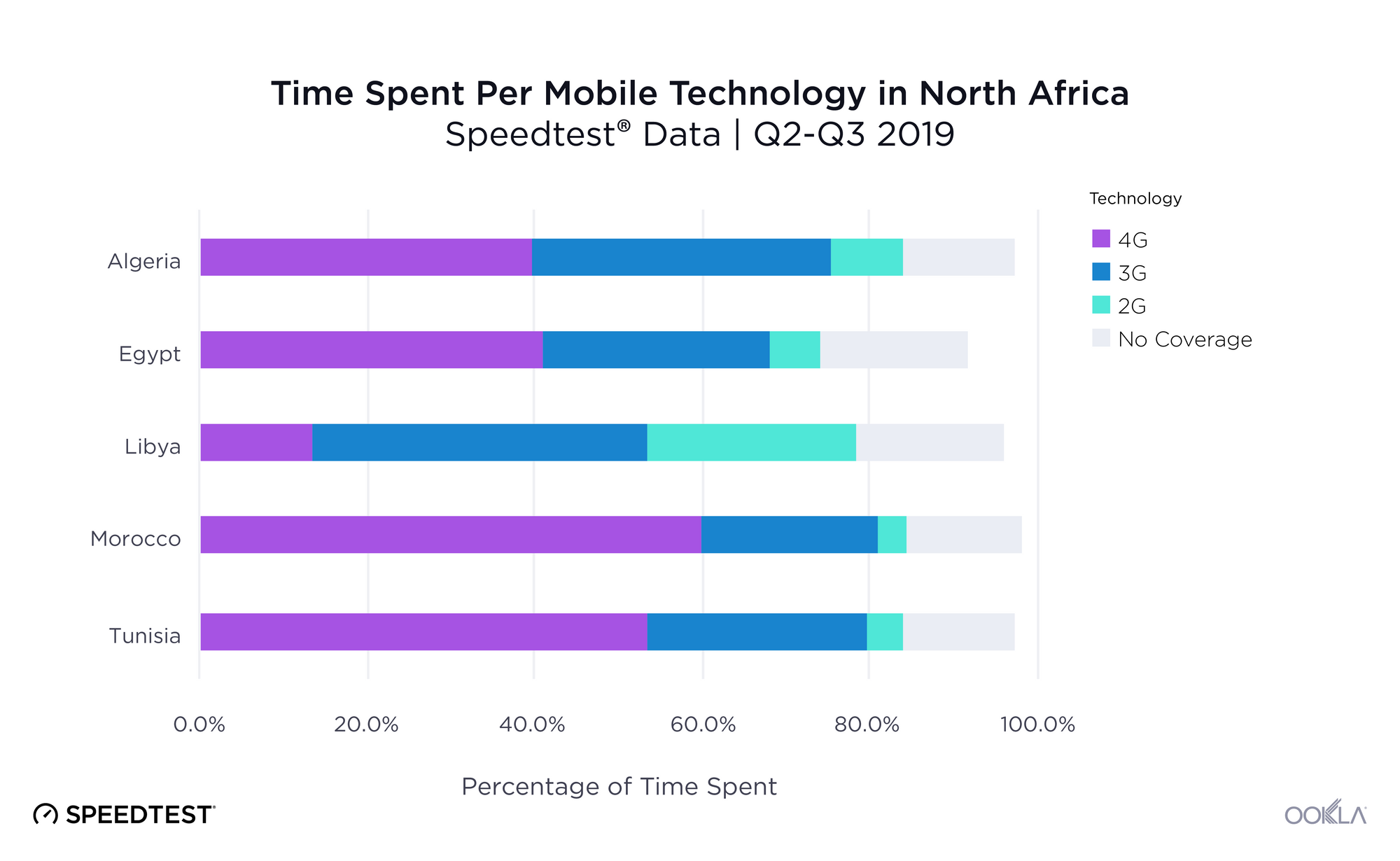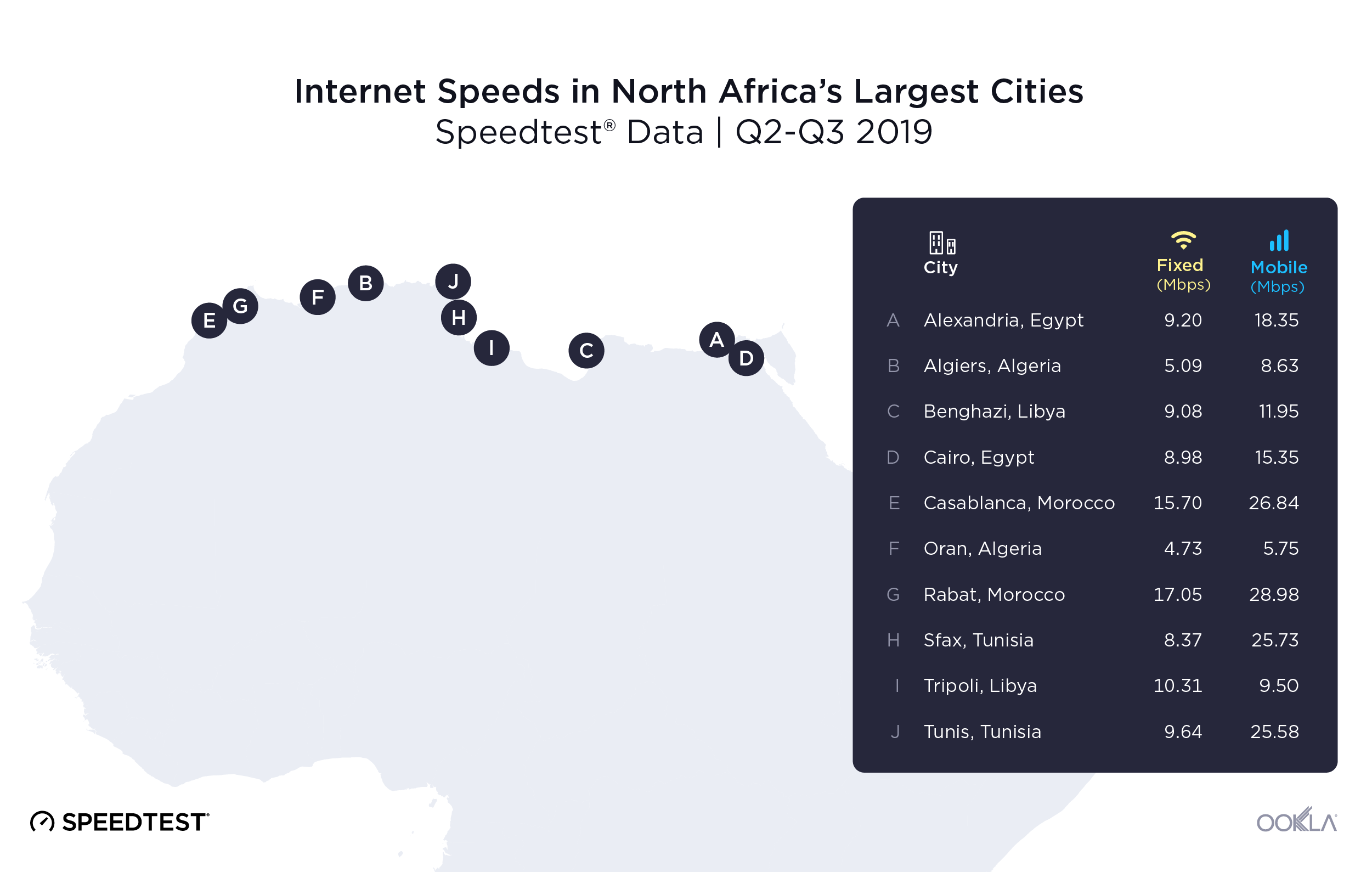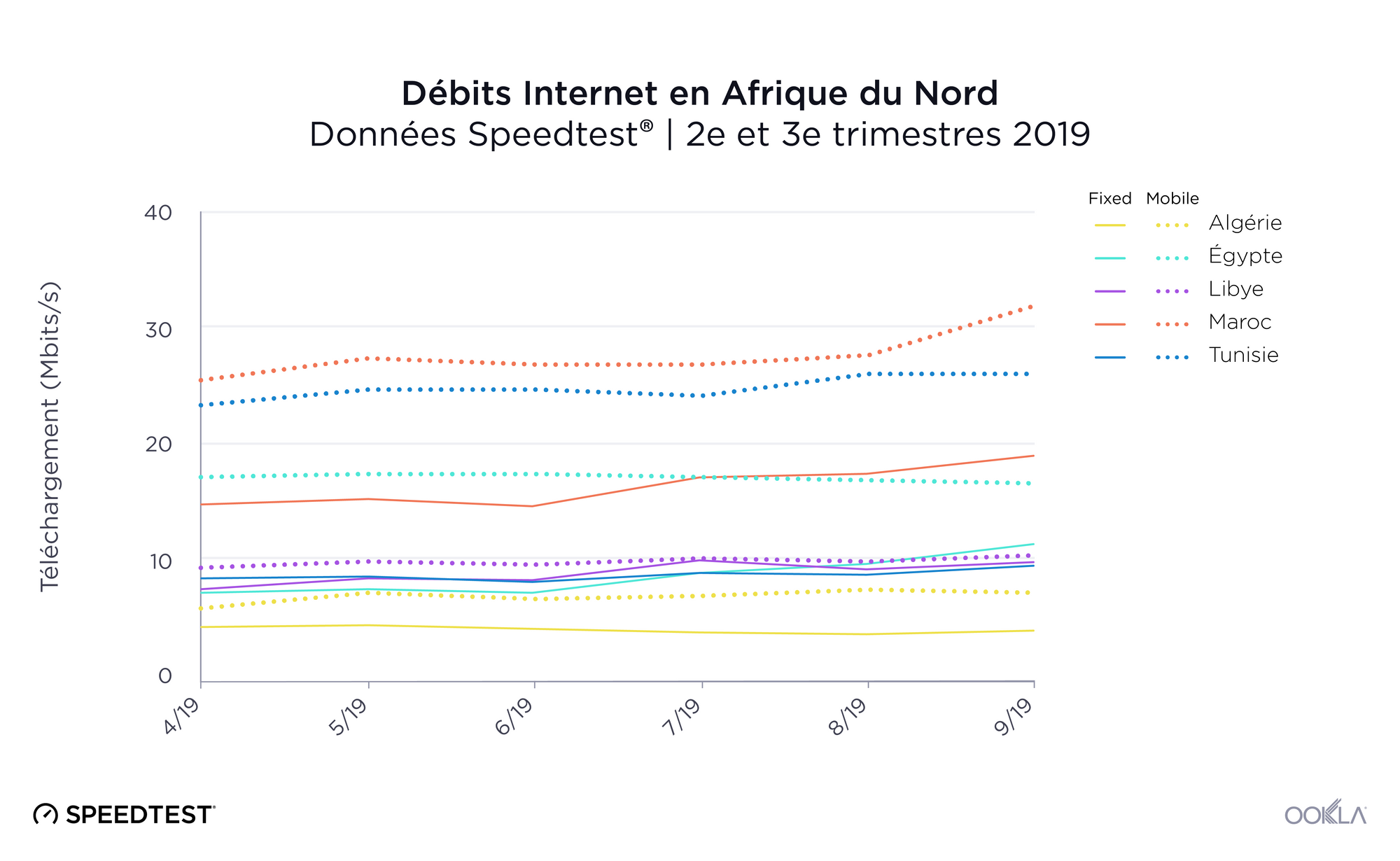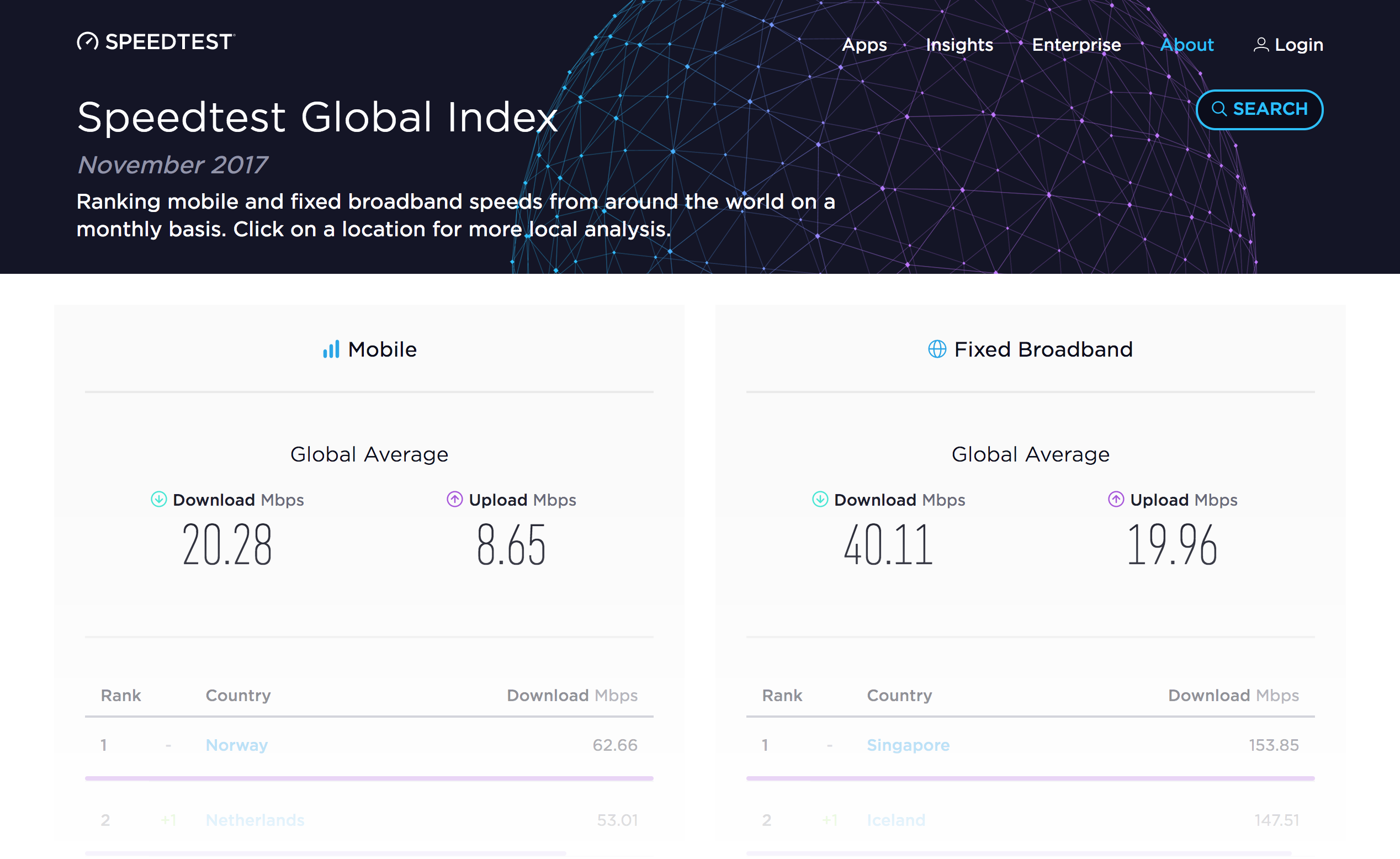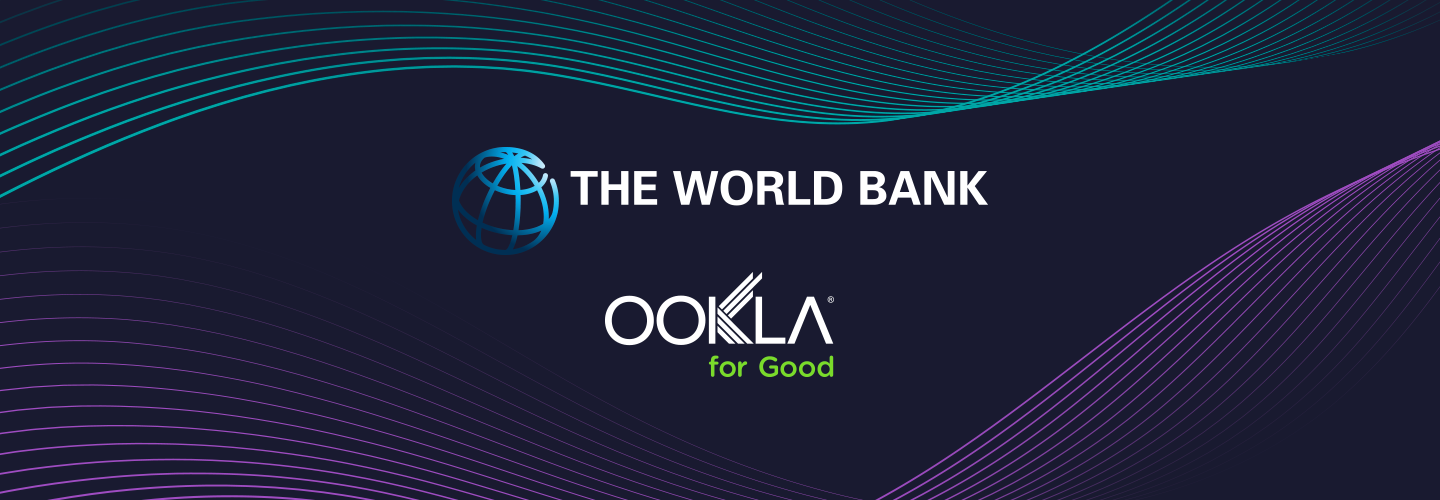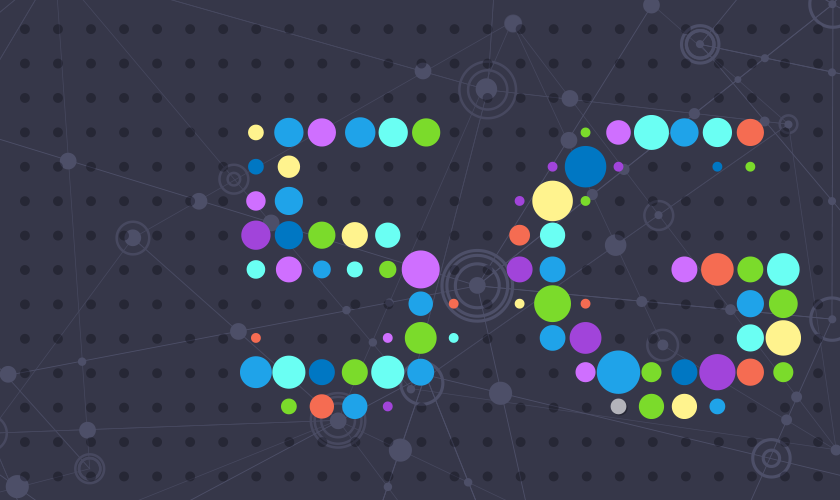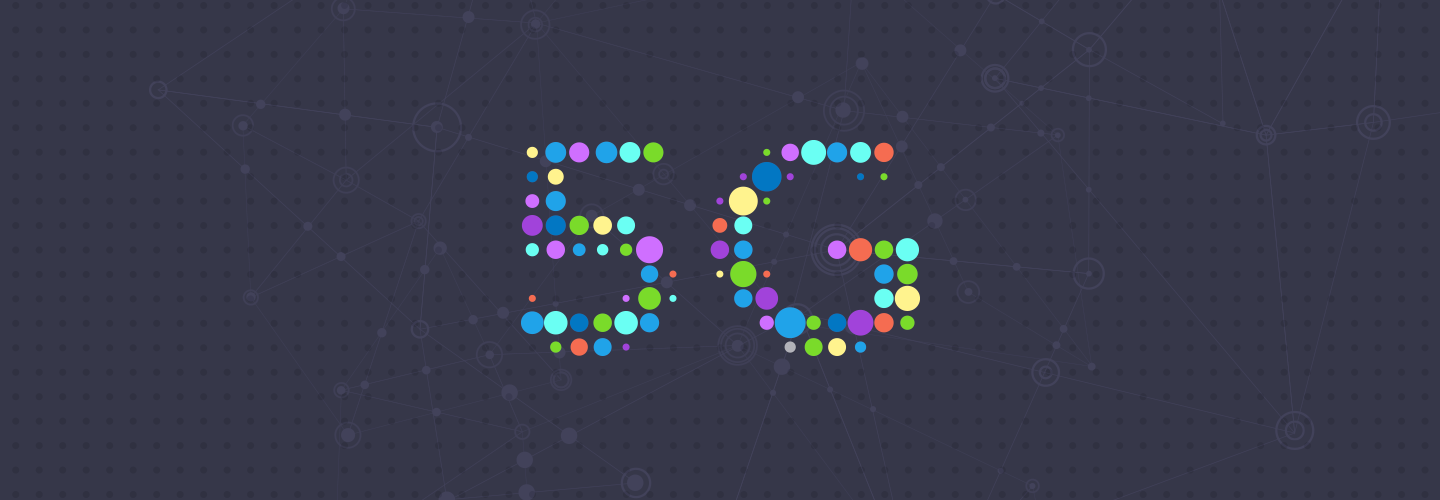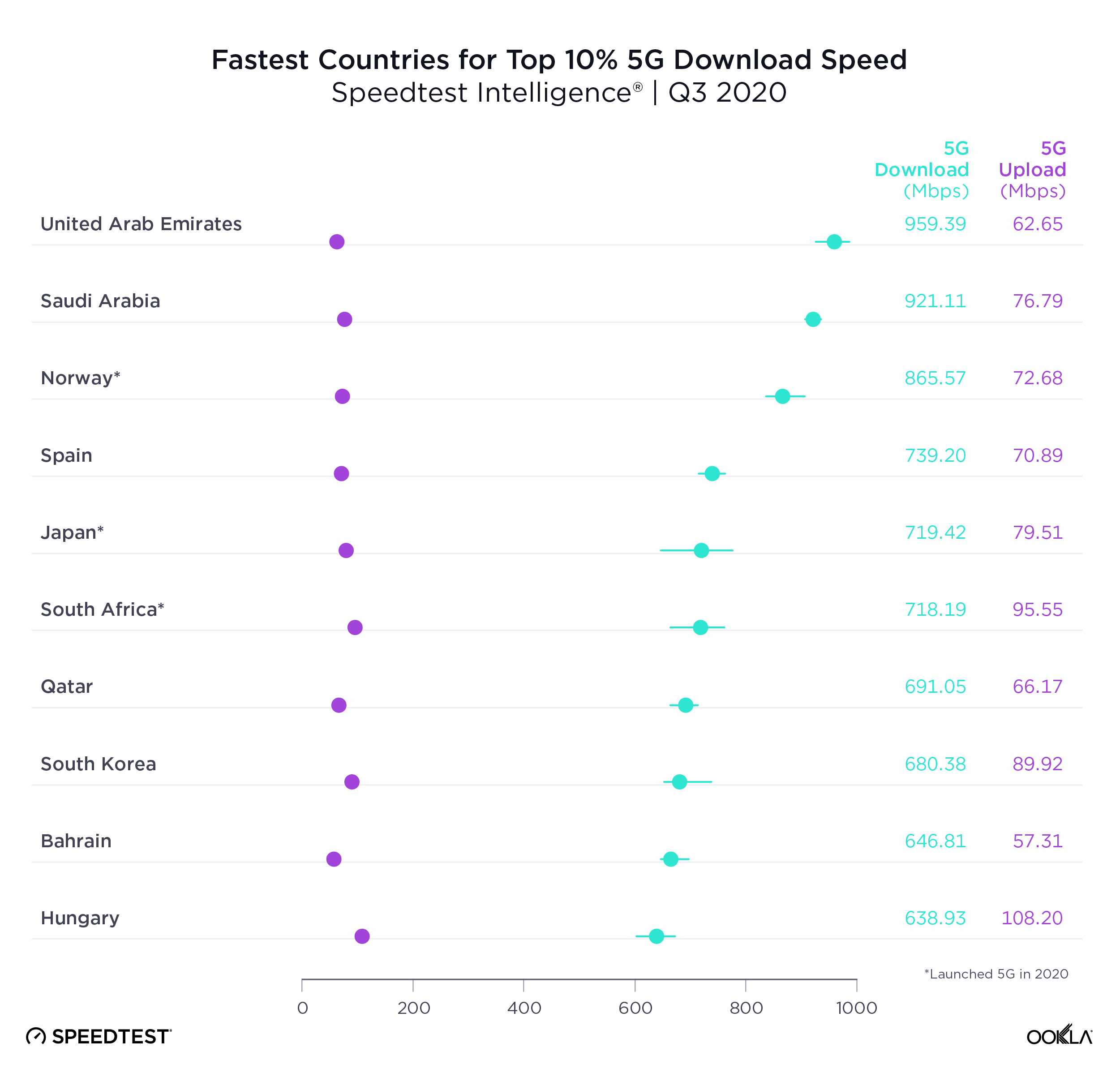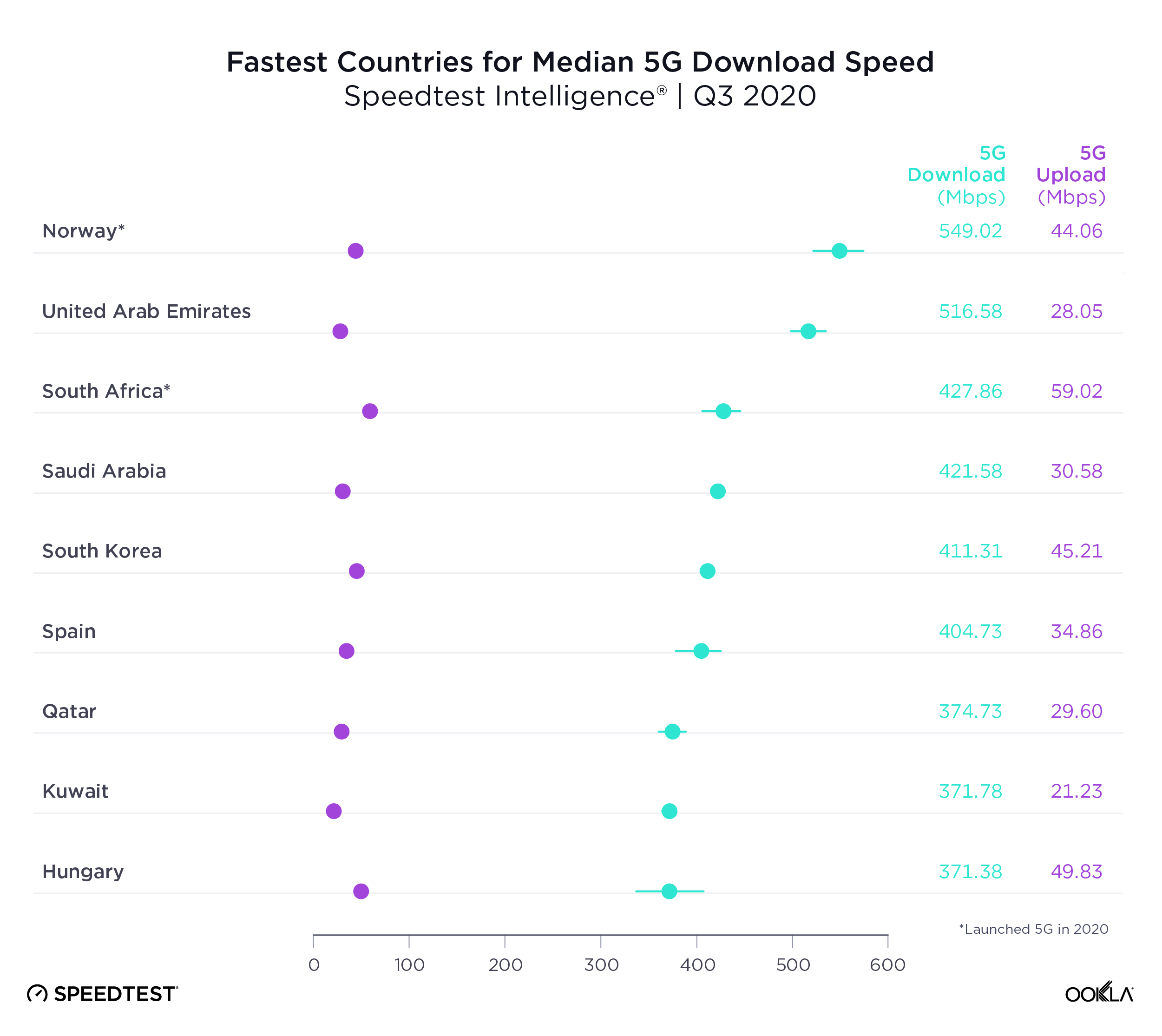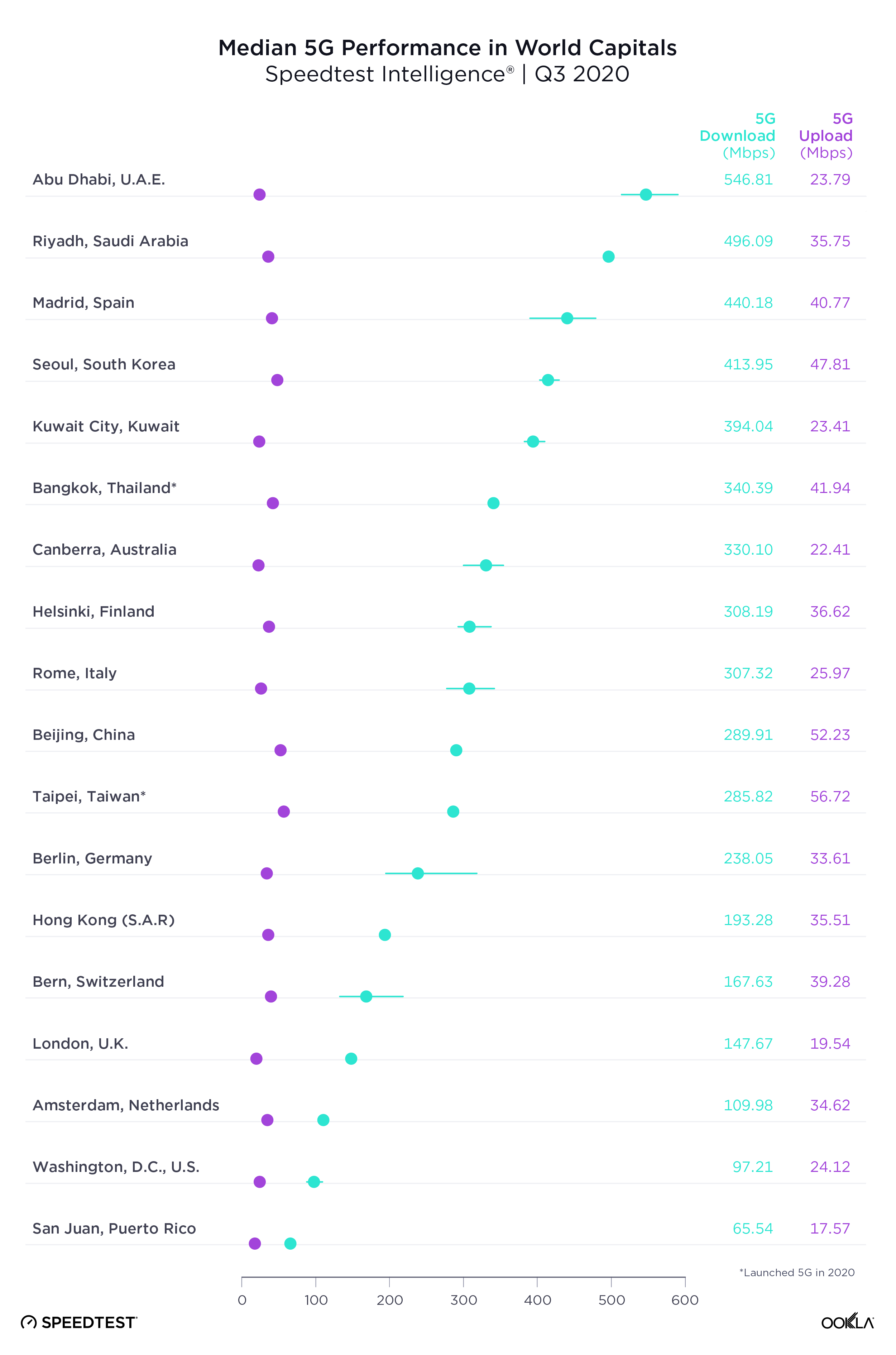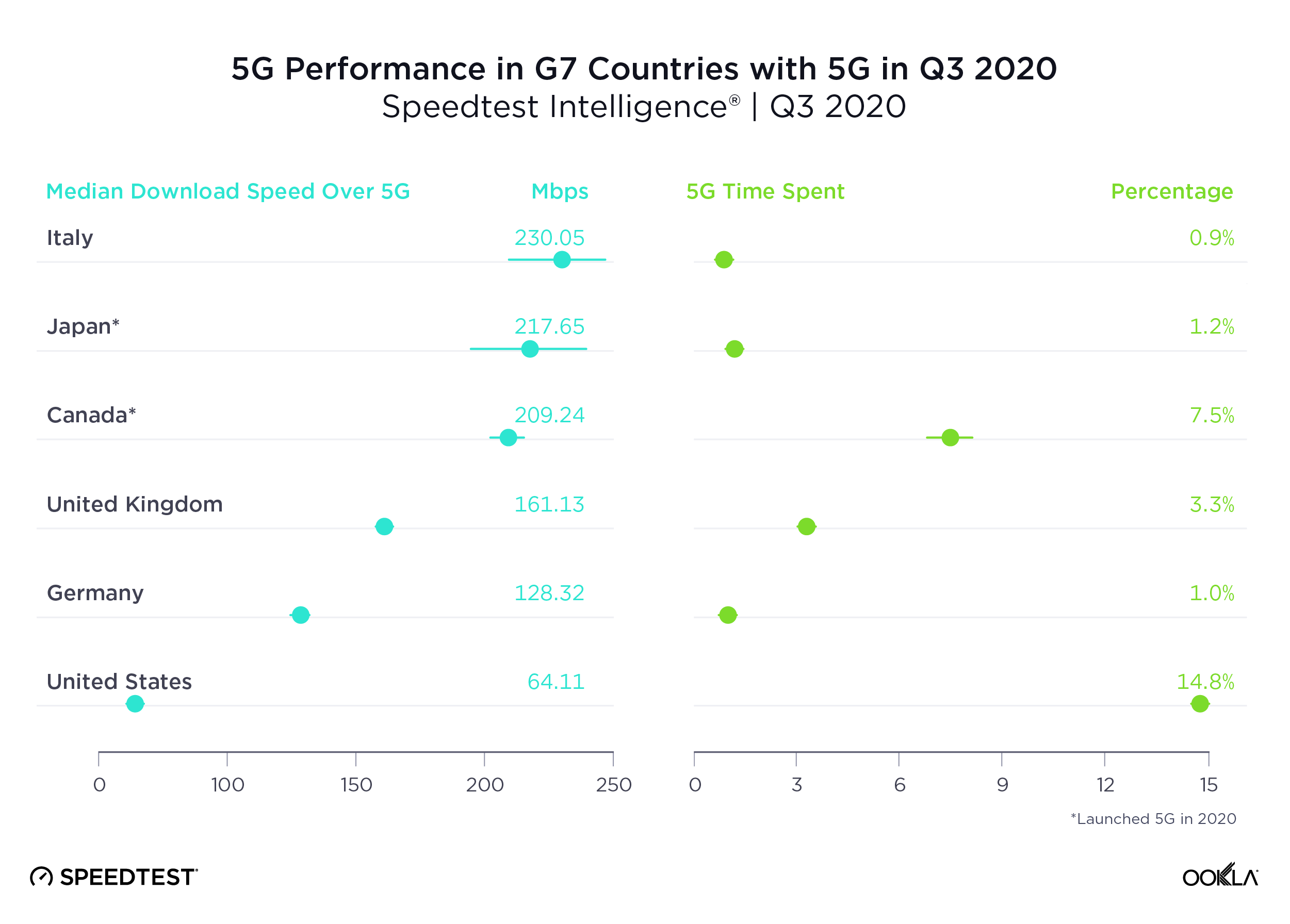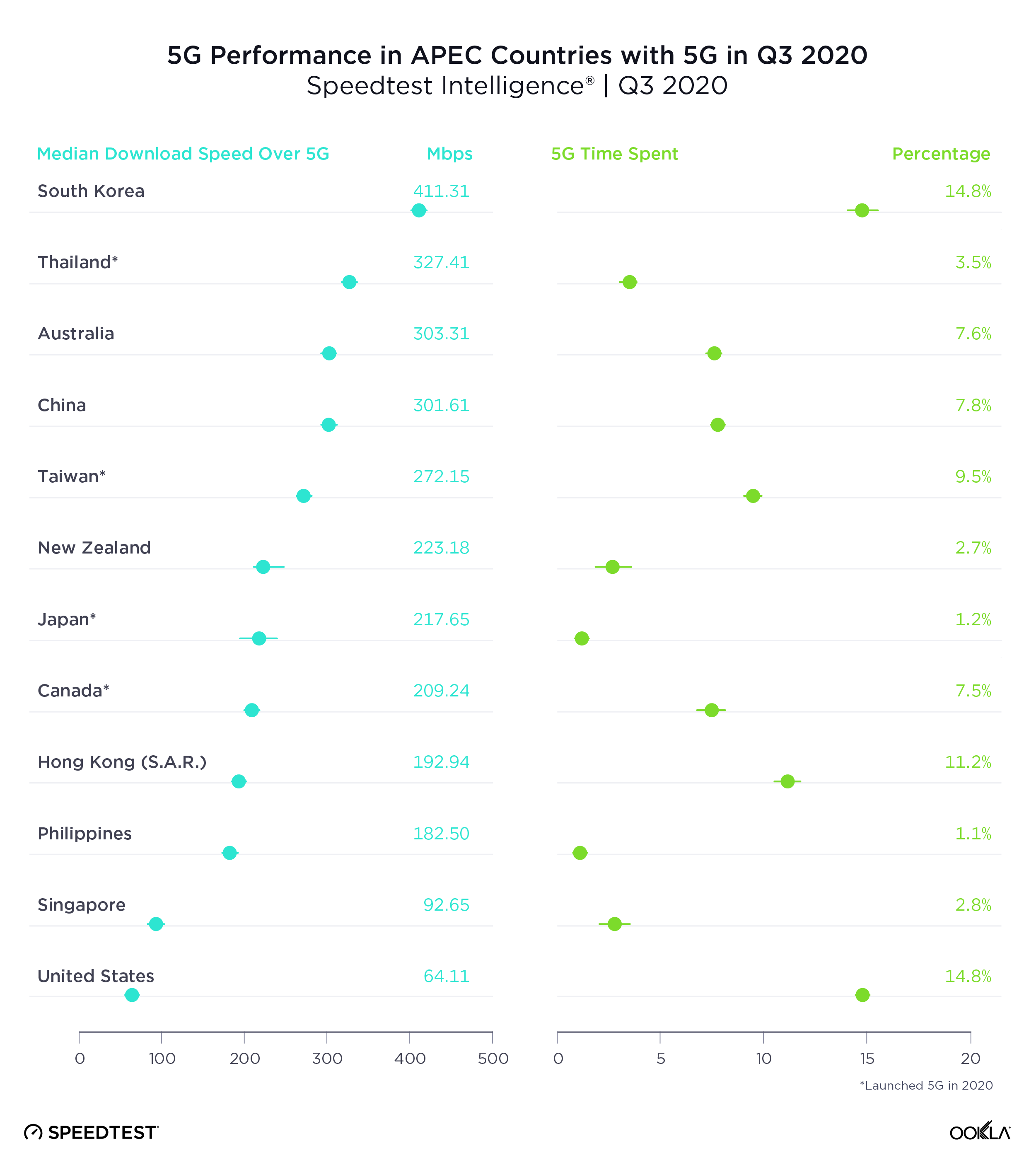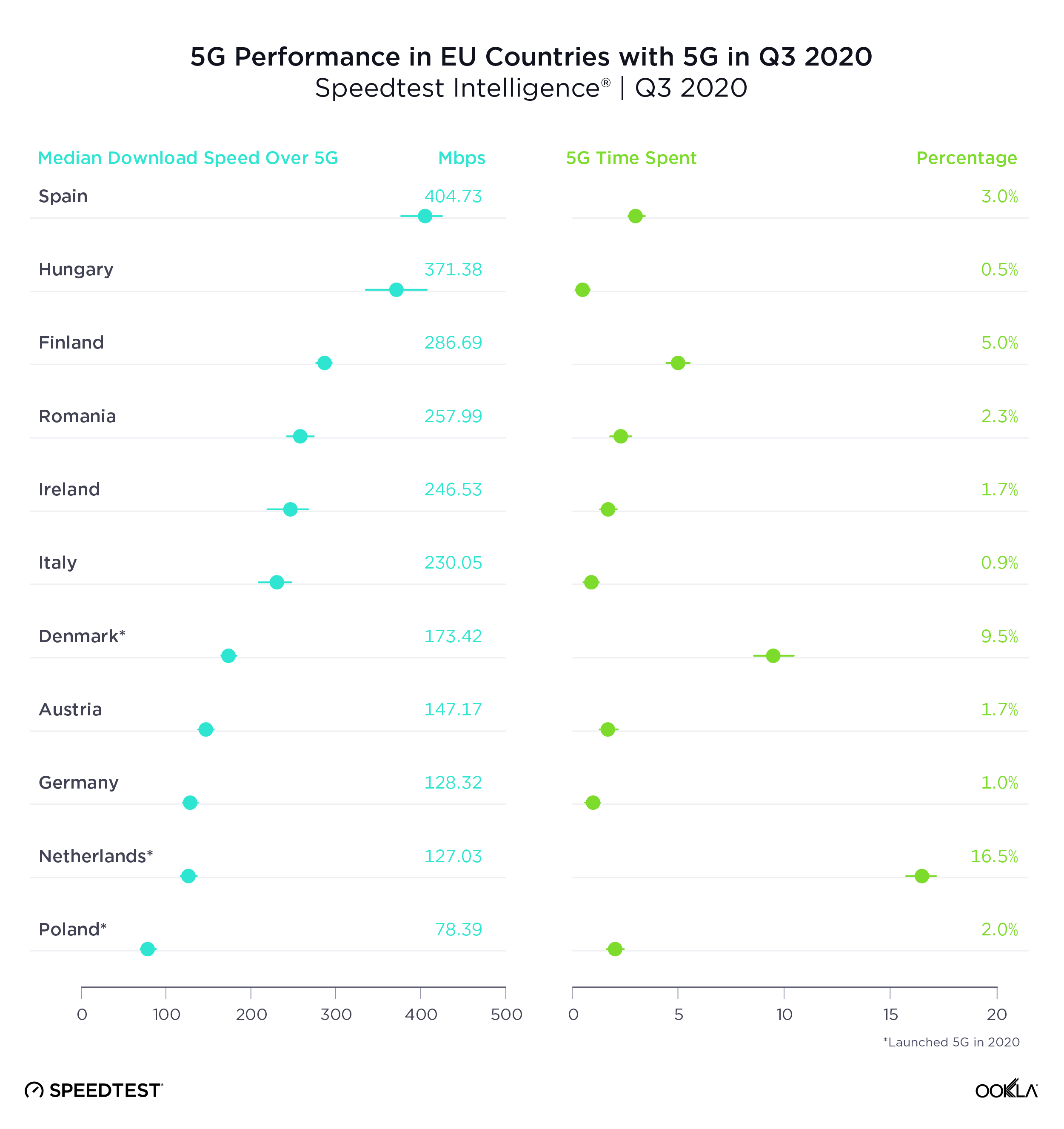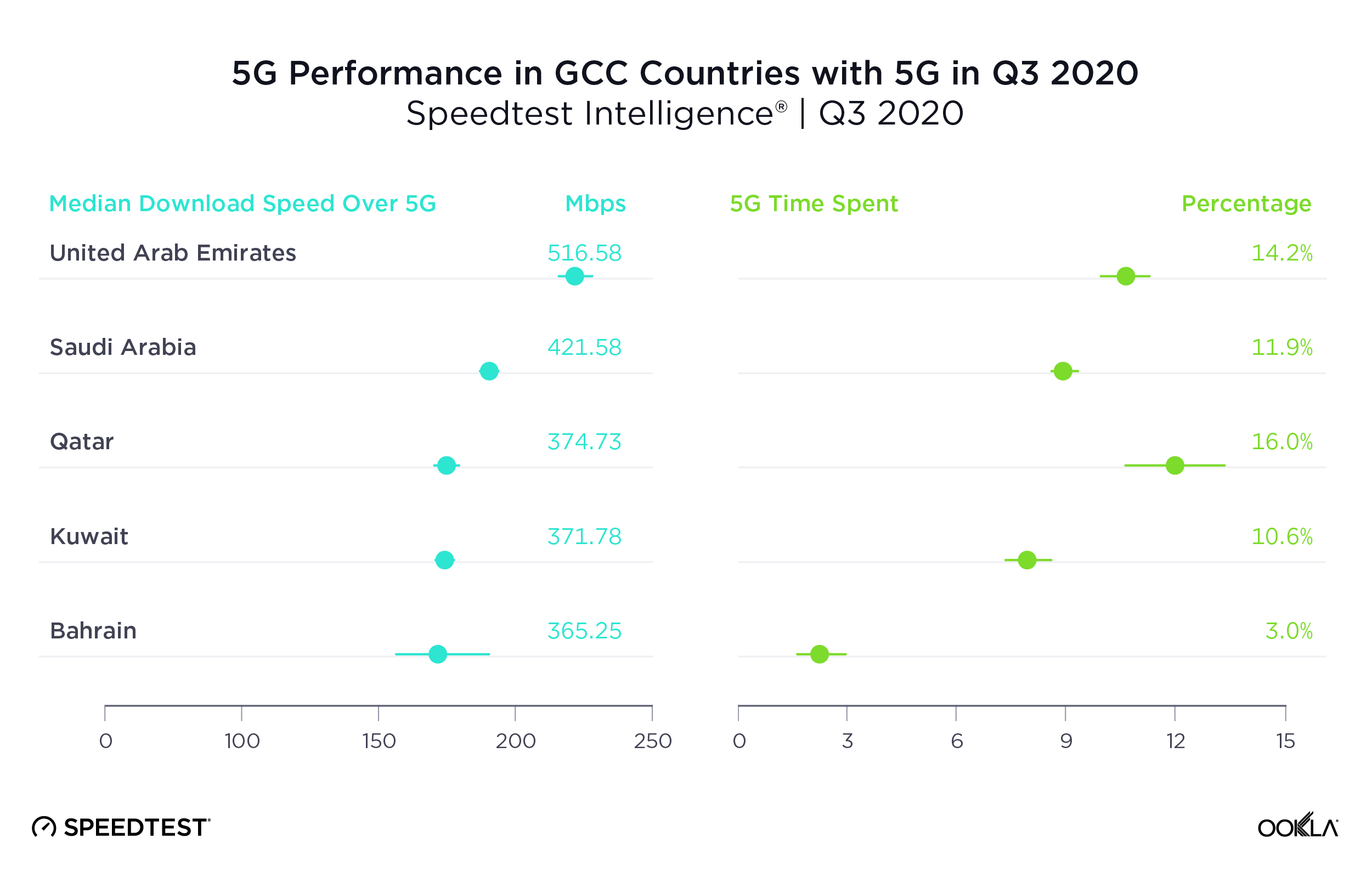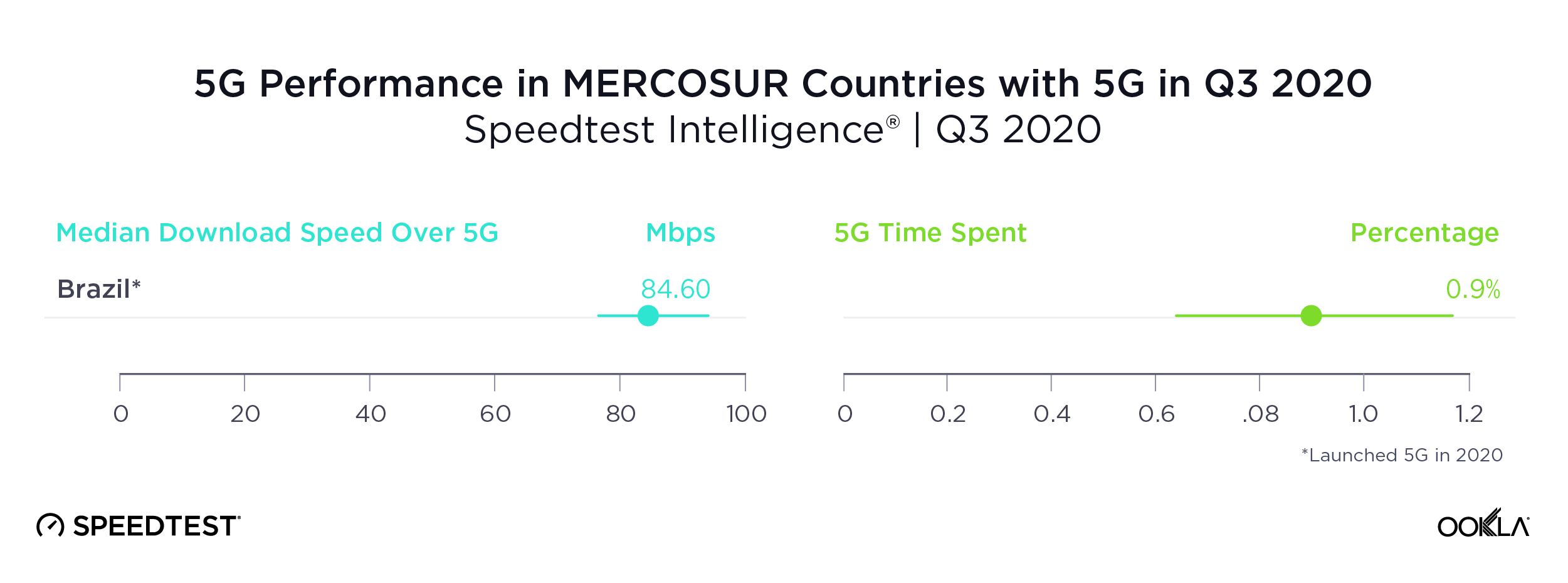Muslims across the world recently observed the month of Ramadan. During this sacred time, observing Muslims abstain from eating and drinking sunrise to sunset, acts of charity are encouraged, and work hours are often shortened. People often gather with friends and family during the evening meal, iftar, and new entertainment programming is often released for people to enjoy together. We were curious how this observance affected internet usage, so we analyzed Speedtest Intelligence® data from a variety of Muslim-majority countries around the world. We looked specifically at test volume during local fast times and iftar (when the fast is broken) and how those numbers compared to test volume during the month prior.
Only some countries showed fewer tests during fast times
We analyzed Speedtest Intelligence data from Algeria, Bangladesh, Egypt, Indonesia, Malaysia, Morocco, Pakistan, Saudi Arabia, Somalia, Sudan, Tunisia, and Turkey during Ramadan to see how the distribution of Speedtest results between fast and iftar times varied by country. It should be noted that while all of the countries we surveyed have a majority Muslim population, the percentage of the population that is Muslim (and therefore likely to observe Ramadan) varies from Somalia (99.8%) to Malaysia (61.3%).
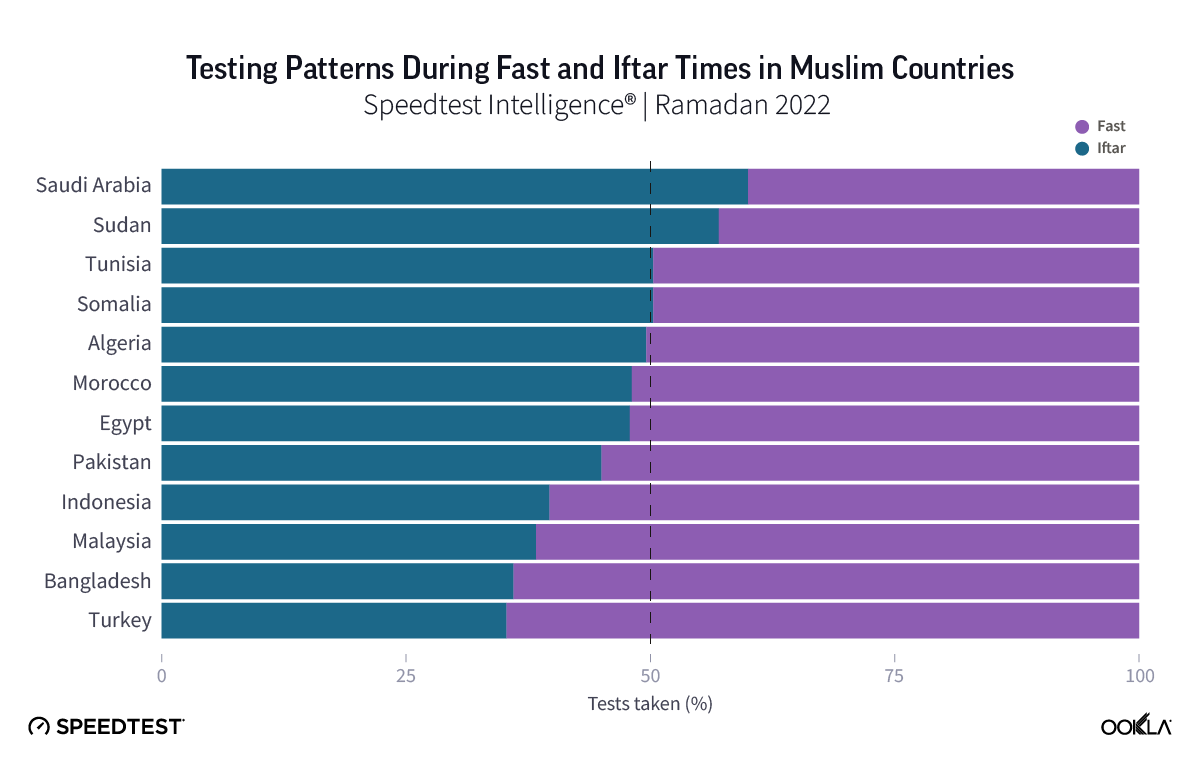
Internet usage patterns changed during Ramadan
Speedtest Intelligence showed that testing behavior changed during Ramadan when compared with the month prior. There was a decrease in the percentage of tests completed in the daytime between Ramadan and the month prior in all of the countries we surveyed. Somalia, Algeria, Saudi Arabia, and Tunisia showed the highest change in trends of daytime Speedtest results when comparing the fasting part of the day during Ramadan to daytime during the month prior. Malaysia, Bangladesh, Turkey, Indonesia, and Pakistan showed the smallest difference between the two periods.

There was also an increase in the percentage of Speedtest results from iftar when comparing Ramadan to the month prior. Somalia and Algeria saw the largest increase when compared with the month prior. Malaysia, Bangladesh, Turkey, and Pakistan saw the smallest increases. This corresponds with the idea that people shift their online activity to iftar during Ramadan, connecting with friends and family, donating to charity, and enjoying the variety of new shows that networks release to coincide with the holiday.
This is a good reminder that every country has special events that their network operators need to prepare in advance for as we saw recently with Expo 2020 Dubai. If you’re interested in coverage of major network events from around the world, subscribe to Ookla® InsightsTM.
Analyse de l’utilisation d’internet en journée durant le Ramadan
Les Musulmans du monde entier ont récemment observé le mois du Ramadan. Pendant ce temps sacré, les Musulmans pratiquants ne mangent pas et ne boivent pas de l’aube au coucher du soleil, les actes de charité sont encouragés et les heures de travail sont souvent réduites. Les gens se retrouvent fréquemment entre amis et en famille pour le repas du soir, l’iftar, et de nouveaux programmes de divertissement sont souvent diffusés pour que les gens puissent en profiter ensemble. Nous étions curieux de savoir comment cette observance affectait l’utilisation d’Internet. Nous avons donc analysé les données de Speedtest Intelligence® provenant de divers pays à majorité musulmane dans le monde. Nous avons particulièrement examiné le volume des tests pendant les heures de jeûne locales et l’iftar (lorsque le jeûne est rompu), puis nous avons comparé ces chiffres au volume des tests du mois précédent.
Seuls quelques pays témoignent d’une réduction de tests pendant les périodes de jeûne
Nous avons analysé les données de Speedtest Intelligence provenant d’Algérie, du Bangladesh, d’Égypte, d’Indonésie, de Malaisie, du Maroc, du Pakistan, d’Arabie Saoudite, de Somalie, du Soudan, de Tunisie et de Turquie pendant le Ramadan pour voir comment la répartition des résultats de Speedtest entre les heures de jeûne et l’iftar variait selon les pays. Il convient de noter que si tous les pays étudiés ont une population majoritairement Musulmane, le pourcentage de la population Musulmane (et donc susceptible d’observer le ramadan) varie de la Somalie (99,8 %) à la Malaisie (61,3 %).
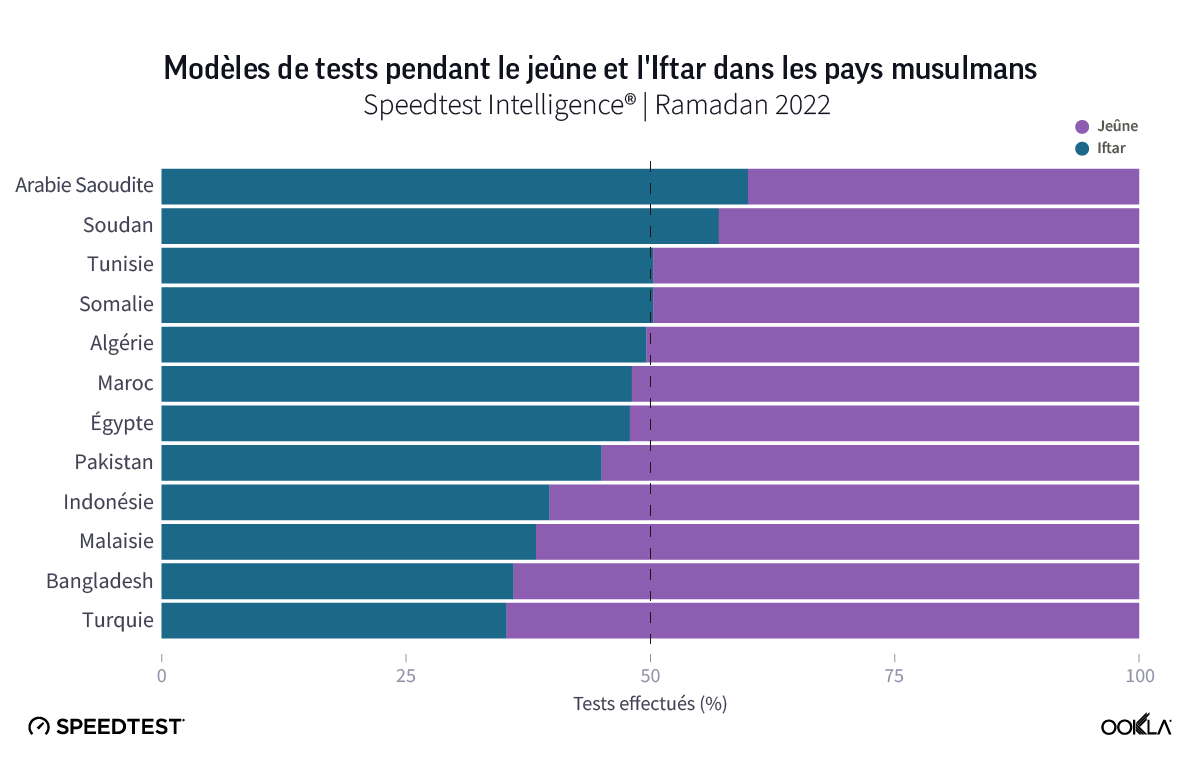
La Turquie, le Bangladesh, la Malaisie, l’Indonésie et le Pakistan ont montré un pourcentage plus élevé de résultats Speedtest pendant le jeûne que pendant l’iftar tout au long du Ramadan 2022. Les pourcentages de tests pendant le jeûne et l’iftar étaient presque équivalents au Maroc, en Égypte, en Algérie, en Tunisie et en Somalie. L’Arabie Saoudite et le Soudan avaient plus de résultats Speedtest pendant l’iftar que pendant le jeûne.
Les habitudes d’utilisation d’internet ont changé pendant le Ramadan
Speedtest Intelligence a montré que le comportement de test a changé pendant le Ramadan par rapport au mois précédent. Il y a eu une diminution du pourcentage de tests effectués dans la journée entre le Ramadan et le mois précédent dans tous les pays que nous avons étudiés. La Somalie, l’Algérie, l’Arabie Saoudite et la Tunisie ont enregistré la plus forte baisse du pourcentage de résultats de Speedtest effectués dans la journée lors de la comparaison entre la journée de jeûne au cours du Ramadan à la journée du mois précédent. La Malaisie, le Bangladesh, la Turquie, l’Indonésie et le Pakistan ont montré la plus petite différence entre les deux périodes.
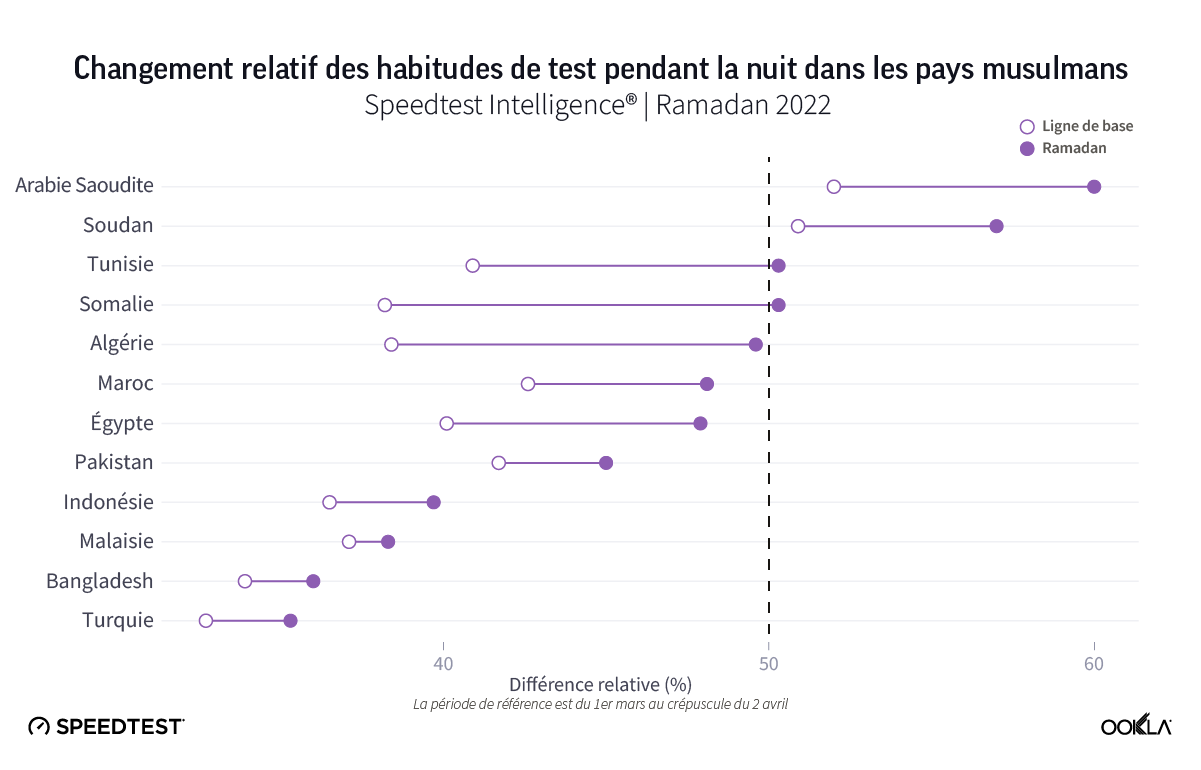
Une augmentation du pourcentage de résultats Speedtest a été observée lors de l’iftar en comparant le Ramadan au mois précédent. La Somalie et l’Algérie ont connu la plus forte augmentation par rapport au mois précédent. La Malaisie, le Bangladesh, la Turquie et le Pakistan ont connu les plus faibles augmentations. Ces résultats correspondent à l’idée que les gens reportent leur activité en ligne à l’iftar pendant le Ramadan, pour passer du temps avec leurs amis et leur famille, faire des dons à des œuvres de charité et profiter de la variété des nouveaux programmes que les réseaux diffusent pour coïncider avec la période des fêtes.
Cette étude est un bon rappel que chaque pays a des événements spéciaux auxquels ses opérateurs de réseau doivent se préparer à l’avance, comme nous l’avons vu récemment avec l’Expo 2020 Dubaï. Si vous êtes intéressé par la couverture des grands événements réseau du monde entier, abonnez-vous à Ookla® Insights™.
Analisis Waktu Penggunaan Internet Selama Ramadan
Umat Islam di seluruh dunia baru-baru ini merayakan bulan Ramadan. Selama bulan suci ini, umat Islam menjalani ibadah puasa sejak matahari terbit hingga terbenam, banyak beramal, dan sering kali mengurangi jam kerja. Orang-orang berkumpul dengan teman dan keluarga saat makam malam, berbuka puasa, dan program hiburan baru seringkali dirilis untuk dinikmati bersama. Kami penasaran bagaimana kepatuhan ini memengaruhi penggunaan internet, jadi kami pun menganalisis data Speedtest Intelligence® dari berbagai negara mayoritas Muslim di seluruh dunia. Kami secara khusus mencermati volume tes pada waktu puasa dan berbuka (saat puasa dihentikan) setempat dan bagaimana perbandingan angka-angka tersebut dengan volume tes di bulan sebelumnya.
Hanya beberapa negara yang menunjukkan tes yang lebih sedikit di waktu puasa
Kami menganalisis data Speedtest Intelligence dari Aljazair, Bangladesh, Mesir, Indonesia, Malaysia, Maroko, Pakistan, Arab Saudi, Somalia, Sudan, Tunisia, dan Turki selama Ramadan untuk mencari tahu bagaimana distribusi hasil Speedtest antara waktu puasa dan waktu berbuka puasa bervariasi antarnegara. Perlu dicatat bahwa meskipun semua negara yang kami survei berpenduduk mayoritas Muslim, persentase penduduk yang beragama Islam (dan, karena itu, mungkin merayakan Ramadan) itu bervariasi, dari Somalia (99,8%) hingga Malaysia (61,3%).
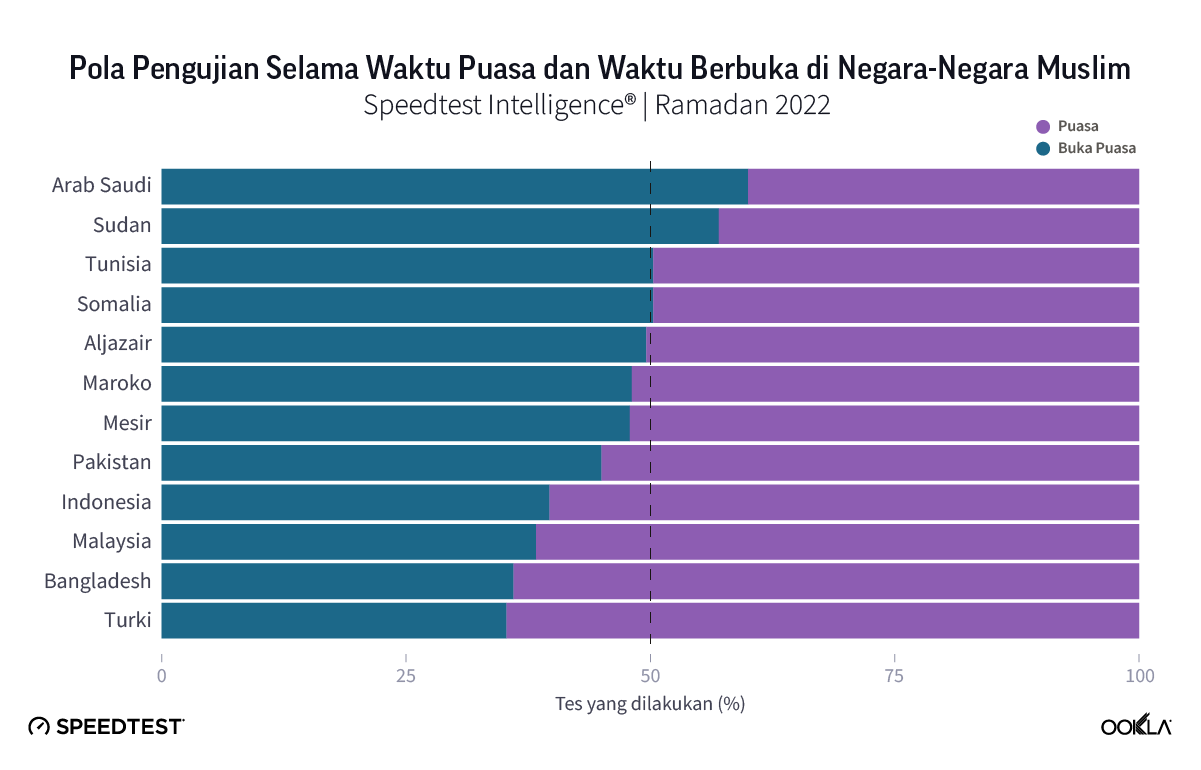
Data dari Turki, Bangladesh, Malaysia, Indonesia, dan Pakistan menunjukkan persentase hasil Speedtest yang lebih tinggi selama waktu puasa dibandingkan waktu berbuka selama Ramadan 2022. Adapun menurut data dari Maroko, Mesir, Aljazair, Tunisia dan Somalia, persentase tes waktu puasa dan berbukanya kurang lebih sama. Sementara Arab Saudi dan Sudan hasil Speedtest-nya selama waktu berbuka lebih banyak daripada waktu puasa.
Pola penggunaan internet berubah selama Ramadan
Speedtest Intelligence menunjukkan bahwa perilaku pengujian berubah selama Ramadan jika dibandingkan dengan bulan sebelumnya. Terjadi penurunan persentase tes yang dilaksanakan pada siang hari antara bulan Ramadan dan bulan sebelumnya di semua negara yang kami survei. Somalia, Aljazair, Arab Saudi, dan Tunisia menunjukkan penurunan persentase hasil Speedtest terbesar di siang hari bulan Ramadan dibandingkan siang hari di bulan sebelumnya. Data dari Malaysia, Bangladesh, Turki, Indonesia, dan Pakistan menunjukkan selisih terkecil di antara kedua periode tersebut.

Juga terjadi peningkatan persentase hasil Speedtest mulai waktu berbuka puasa di bulan Ramadan dengan bulan sebelumnya. Somalia dan Aljazair mengalami peningkatan terbesar jika dibandingkan dengan bulan sebelumnya. Malaysia, Bangladesh, Turki, dan Pakistan mengalami peningkatan terkecil. Ini selaras dengan asumsi bahwa orang-orang mengalihkan aktivitas online mereka ke waktu berbuka selama Ramadan, berbaur dengan teman dan keluarga, bederma, dan menikmati berbagai acara baru yang dirilis oleh jaringan bertepatan dengan hari raya.
Ini adalah pengingat yang bagus bahwa setiap negara memiliki acara-acara khusus yang perlu dipersiapkan terlebih dulu oleh para operator jaringan seperti yang kita lihat baru-baru ini pada Expo 2020 Dubai. Jika Anda tertarik dengan liputan acara-acara jaringan utama dari seluruh dunia, silakan berlangganan Ookla® Insights™.
Menganalisis Masa Penggunaan Internet Semasa Bulan Ramadan
Orang islam di seluruh dunia baru-baru ini telah menyambut bulan Ramadan. Semasa bulan suci ini, mereka menahan diri dari makan dan minum bermula dari waktu matahari terbit hingga matahari terbenam, aktiviti kebajikan digalakkan, dan waktu bekerja kebiasaannya dipendekkan. Orang ramai biasanya akan berkumpul bersama-sama rakan dan keluarga semasa waktu berbuka puasa, iftar, dan rancangan hiburan baru sering disiarkan untuk ditonton dan dinikmati bersama-sama.
Kami ingin tahu bagaimana sambutan bulan Ramadan ini memberi kesan terhadap penggunaan internet, jadi kami telah menganalisis data Speedtest Intelligence® dari pelbagai negara dengan majoriti Muslim di seluruh dunia. Kami melihat secara khusus jumlah ujian semasa waktu berpuasa dan iftar (waktu berbuka puasa) tempatan dan membandingkan nilai tersebut dengan jumlah ujian semasa bulan sebelumnya.
Hanya beberapa negara yang menunjukkan bilangan ujian lebih rendah semasa waktu berpuasa
Kami telah menganalisis data Speedtest Intelligence dari Algeria, Bangladesh, Mesir, Indonesia, Malaysia, Maghribi, Pakistan, Arab Saudi, Somalia, Sudan, Tunisia, dan Turki semasa bulan Ramadan untuk melihat pengagihan keputusan Speedtest di antara waktu berpuasa dan iftar yang berbeza mengikut negara. Perlu dinyatakan bahawa, walaupun semua negara yang diselidik mempunyai penduduk majoriti Muslim, peratusan penduduk yang beragama Islam (dan oleh itu lebih berkemungkinan menyambut Ramadan) berbeza-beza dari Somalia (99.8%) ke Malaysia (61.3%).

Turki, Bangladesh, Malaysia, Indonesia, dan Pakistan menunjukkan peratusan keputusan Speedtest yang lebih tinggi semasa waktu berpuasa berbanding waktu berbuka semasa bulan Ramadan 2022. Peratusan ujian waktu berpuasa dan iftar adalah agak sama dengan Morocco, Mesir, Algeria, Tunisia dan Somalia. Saudi Arabia dan Sudan mempunyai keputusan Speedtest yang lebih tinggi semasa waktu berbuka berbanding waktu berpuasa.
Corak penggunaan Internet berubah semasa bulan Ramadan
Speedtest Intelligence menunjukkan bahawa tingkah laku ujian berubah semasa bulan Ramadan apabila dibandingkan dengan bulan sebelumnya. Terdapat penurunan dalam peratusan ujian yang dilengkapkan semasa waktu siang antara bulan Ramadan dan bulan sebelumnya dalam semua negara yang dikaji selidik. Somalia, Algeria, Saudi Arabia, dan Tunisia menunjukkan penurunan terbesar dalam peratusan keputusan waktu siang Speedtest apabila dibandingkan dengan waktu berpuasa semasa bulan Ramadan dengan waktu siang bulan sebelumnya. Malaysia, Bangladesh, Turki, Indonesia, dan Pakistan menunjukkan perbezaan terkecil di antara dua tempoh ini.
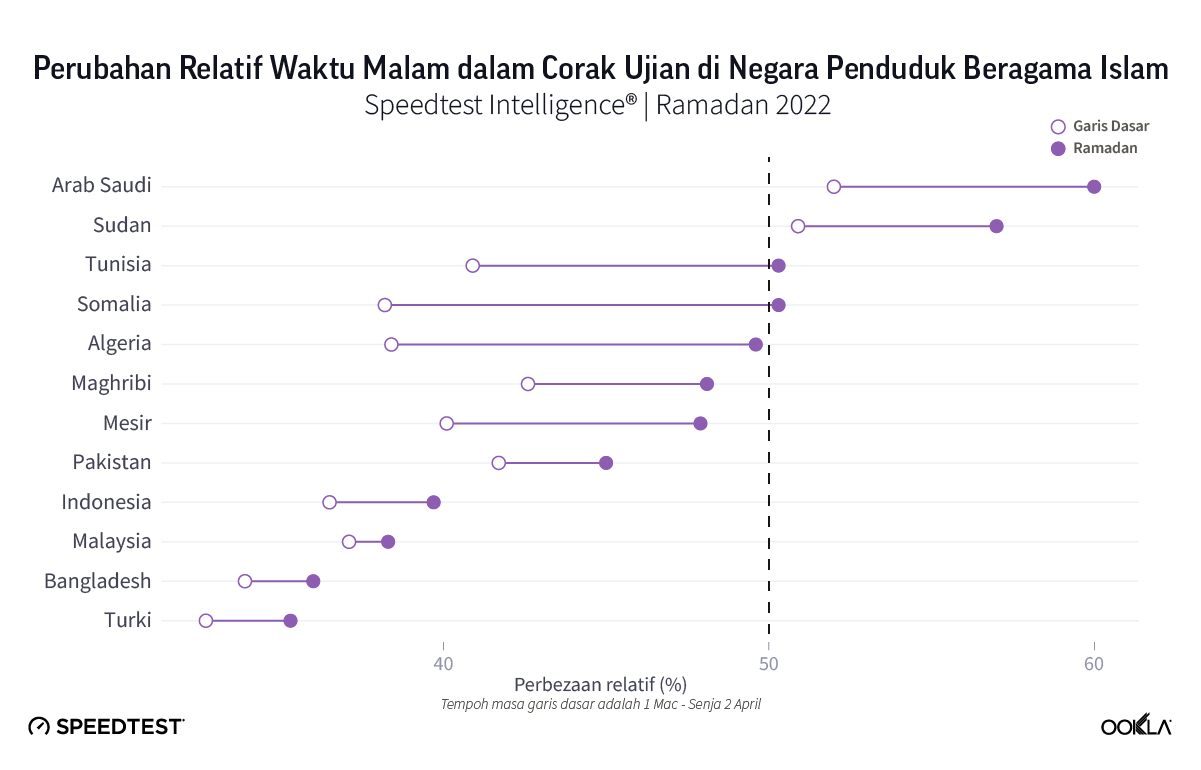
Terdapat juga peningkatan dalam peratusan keputusan Speedtest dari waktu iftar apabila membandingkan bulan Ramadan kepada bulan sebelumnya. Somalia dan Algeria mempunyai peningkatan terbesar apabila dibandingkan dengan bulan sebelumnya. Malaysia, Bangladesh, Turki, dan Pakistan mempunyai peningkatan terkecil. Ini selari dengan pendapat bahawa ramai yang menukar aktiviti dalam talian mereka kepada iftar semasa bulan Ramadan, berhubung dengan rakan dan keluarga, menderma kepada badan kebajikan, dan menikmati pelbagai rancangan baru yang disiarkan oleh rangkaian yang bersesuaian dengan sambutan ini.
Ini adalah satu peringatan yang baik bahawa setiap negara mempunyai peristiwa istimewa yang pengendali rangkaian perlu sediakan lebih awal seperti yang kita lihat baru-baru ini di Expo 2020 Dubai. Jika anda berminat dengan liputan acara rangkaian besar dari seluruh dunia, langganlah Ookla® Insights™.
Ookla retains ownership of this article including all of the intellectual property rights, data, content graphs and analysis. This article may not be quoted, reproduced, distributed or published for any commercial purpose without prior consent. Members of the press and others using the findings in this article for non-commercial purposes are welcome to publicly share and link to report information with attribution to Ookla.


